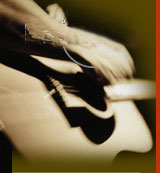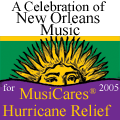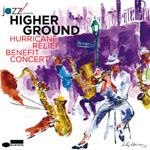Before The Tyme Was Right...
Part Two - Album Two, Almost The Third,
and Disintegration
By
Arthur Wood
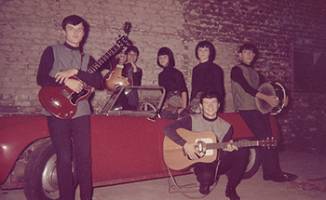
The Goldebriars (L to R): Tom Dorholt,
Murray Planta, Dotti Holmberg,
Sheri Holmberg, Ron Edgar,
and Curt Boettcher (kneeling)
Last week we traced the formation of the
Goldebriars in Minneapolis during early 1963 through to
the recording of their debut album for CBS/Epic Records later
that year (if you missed Part One click HERE
to read it now in our ARCHIVES).
We begin this week with group's first television
appearance...
At the University of Tennessee in Knoxville
on January 21, 1964, the Goldebriars filmed the ABC-TV network
music program Hootenanny. Also appearing on the show
was The Cumberland Trio (not to be confused with The
Cumberland Three), Bill Monroe & The Blue Grass
Boys, Homer & Jethro, Doc Watson, comedy
act The Geezinslaw Brothers, Joan Toliver, and Pete
Fountain & Serendipity Singers. Around this time the
Goldebriars were signed by the New York-based booking agency
ITA and played a showcase at the Big Apple's Blue Angel Club
opening for Australian-born painter/musician and fellow Epic
recording artist Rolf Harris, who had recently enjoyed
a hit with the humorous "Tie Me Kangaroo Down." [See Note
#1]
Throughout 1964 the group performed in
clubs nationwide, in Illinois (Joliet's Know Where),
Washington, D.C. (The Cellar Door), Colorado (Denver's
Exodus), and Florida (Miami). At The Shadows, a Washington,
D.C., club just down the street from where the Goldebriars
were appearing at The Cellar Door, they met fellow acoustic
road warriors Gale Garnett and her bass player Keith
Olsen, The Modern Folk Quartet, and, significantly,
The Big Three (Tim Rose, James Hendricks,
and Cass Elliot). On a later occasion they ran into
Cass at The Shadows when she was a member of the short-lived
Mugwumps, and the bands jammed after the show late into
the night. The Mugwumps consisted of Elliot, Hendricks,
Denny Doherty (prior to joining The New
Journeymen), and the late Zal Yanovsky (The
Lovin Spoonful). Bob Goldstein, a New Yorker, was
hired to hone the quartet's stage act. He was also a
songwriter and introduced the group to his friend and fellow
writer Beverly Ross. As summer approached, the group
cut its sophomore album. Where there had been a prevalence of
traditional material on their debut, six of the former stood
alongside the same number of originals on Straight
Ahead!, the latter being composed by Curt
Boettcher, Ross, Goldstein, and others. Produced once
again by Bob Morgan, the instrumentation employed on
the Straight Ahead! sessions included vibes,
harpsichord, tuba, and drums.
Once the album was completed, Sheri
Holmberg announced that she was leaving the group.
Boettcher and the elder Holmberg sister had been a couple, but
then Curt ended the liaison. For just over three months
Cathi Weaver from Eau Claire, Wisconsin, took her
place. Cathi and Curt had previously worked together as the
duo The Chalices. That summer the group was engaged to
appear in a Folk music exploitation movie titled Once Upon
A Coffee House (aka Hootenany A Go-Go). Finally
released during 1965, in addition to the Goldebriars the
contributing musicians included Oscar Brand, the
Free Wheelers and Jim, Jake and Joan (the latter
being Joan Rivers). Straight Ahead! [Index #s BN
26114 for stereo, LN 26114 for mono] was released by Epic
Records during August 1964 and a few months later the
collection yielded one single, "Castle On The Corner"
(Goldstein) b/w "I've Got To Love Somebody" (traditional
arranged). "Sea of Tears" (Boettcher/Goldstein) b/w "I've Got
To Love Somebody" was released as a single in the U.K.
Like their debut album, Straight
Ahead! is awash with additional tracks, ten of them,
although I intend to only focus on the album's original twelve
songs. Opening the album is "Sea Of Tears," a love song
co-written by Boettcher and Goldstein and with Curt taking the
lead vocal. This is followed by "MacDougal Street," a Beverley
Ross "boy meets girl" composition set in Greenwich Village.
While this opening pairing possesses a contemporary Pop feel
not present on their debut album, the group returns to its
traditional roots with the Blues-tinged "I've Got To Love
Somebody." An unreleased alternate take of "Jump Down" appears
on the Goldebriars, while the Straight Ahead!
version is somewhat frenetic and features Neilson's banjo and
a gruff-sounding tuba. The next song, "Pick A Bale of Cotton,"
was a #11 U.K. Pop hit for British skiffle musician Lonnie
Donegan during the fall of 1962. Boettcher takes his lead
on his wistful original "Haiku," while the calypso-styled
anti-war song "No More Bomb" was penned by Goldstein, Jerry
Powell, and Michael McWhinney. While the latter was
an intentional protest song, it employed a somewhat commercial
approach. Press the skip button before "Queen Of Sheba," which
is definitely the Goldebriars' musical sore thumb. I'm
sticking with the notion that this cover song was a label,
not a group selection. Instead move straight on to the
group's animated reading of the Gospel number "Joy, Joy, Joy,"
a tune the late Bob Gibson popularized during the late
1950s. Goldstein's sugar-sweet love ballad (and 7" U.S.
single) "Castle On The Corner" find the Goldebriars once more
at their multi-layered vocal best and their sophomore album
closes with a couple of traditional songs, "Zum Gale Gale" and
a rousing reading of the Gospel-flavored "Ride The Chariot."
Sheri Holmberg rejoined the group during
September while Ron Neilson departed and returned to
Minneapolis. In the process three new group members were
recruited, namely Ron Edgar (drums), Murray
Planta (lead guitar), and Tom Dorholt (bass). The
Goldebriars, obviously influenced by The Beatles'
commercial success and musical ethos, now aimed for an
electric-Pop sound while retaining those layered, male/female
harmonies. Through the latter part of the year the group spent
a considerable number of weeks (including appearances over the
Christmas and New Year period [See Note 2]) performing at
Charleston, South Carolina's 300 King St. Club, where they
soon established an avid following. Sean Bonniwell and
his band The Wayfarers were based out of the club. In
addition, in late 1964 they recruited Luther Galliard as their
road manager, for a time at least. In her CD-ROM book Dotti
Holmberg describes Luther as "a typical southern gentleman
from Charleston, South Carolina." It's worth noting at this
juncture that Sheri and Keith Olsen were now a couple and
would later be married for a period of seven years. During the
course of five recording sessions, held in New York during
late November with Bob Morgan once more at the helm, the
six-piece Goldebriars recorded eight songs including "June
Bride Baby" and "Nothing Wrong With You That My Love Can't
Cure."
This is probably an appropriate point at
which to look at the aforementioned ten unreleased tracks on
Straight Ahead!. Closing the CD is the only track to be
previously issued by the six-piece version of the group. Their
spring 1965 Epic single featured the saccharine Pop tune "June
Bride Baby" (Goldstein/Ross) b/w "I'm Gonna Marry You"
(Goldstein). In relation to the eight songs mentioned at the
close of the last paragraph, the Straight Ahead!
reissue features two versions (each) of Jimmy Reed's
Blues song "Hush, Hush" and "Tell It To The Wind." Goldstein
co-wrote the latter song with Jeff Barry, Ellie
Greenwich's long-time New York City/Brill Building-based
hit songwriting partner. Powell and McWhinney are responsible
for "The Last Two People On Earth," a sequel to "No More Bomb"
in as much as the bomb was exploded and it's also a sixties,
social consciousness number that pretty much envisages the
Summer of Love. The guitar sounds that introduce the
Goldstein/Ross-penned "Nothing Wrong With You That My Love
Can't Cure" possesses definite shades of Liverpool's The
Searchers and further confirms the Goldebriars' new Pop
bent. Dylan's "Walkin' Down The Line" is another
sixties number that, like "He Was A Friend Of Mine," didn't
surface in his catalogue of recordings till The Bootleg
Series, Vol. 1 - 3 [1991]. The Goldebriars' up-tempo
version of "Walkin' Down The Line" is supported by keyboards
and a solid bass and drum backbeat. Although the group was now
enthusiastically employing bass, drums, and electric guitars,
the two readings of Goldstein/Barry's "Tell It To The Wind" is
the closest they come as a six-piece to the layered, harmony
vocal sound with which the Goldbriars launched their
career.
In early February 1965, the Goldebriars
headed to London, Ontario, where they filmed a couple of
Sing Out! television programs. The show's emcee was
none other than Oscar Brand, whom they had met on a Florida
movie set midway through the previous year. The sextet was now
playing electric instruments while Brand had previously
observed them as an acoustic quartet. Since Sing Out!
Was, strictly speaking, an acoustic Folk music show, according
to Dotti, the Goldebriars had to perform their most
"commercial Folk songs." Heading south via Charleston, they
picked up Sean Bonniwell, who, following the demise of
The Wayfarers, had decided to try his luck on the West
Coast. Turning west, in Denver they performed at the Exodus,
then the group made its California debut with a three-week
residency at the Ice House in Pasadena beginning in early
March. In the process the Goldebriars became the first band to
perform at the venue using electric instruments. The group
then moved on to The Mecca in Buena Park during April. David
Mirisch became the group's latest manager around that time and
soon scored them a showcase at The Coconut Grove. In addition,
the Goldebriars auditioned to appear on the television shows
Hullabaloo and Shindig. Ron Edgar left in May to
join Sean Bonniwell's Music Machine, the lineup of
which also included Keith Olsen and Doug Rhodes.
Bill Taylor was drummer during the final month that the
Goldebriars were together. On June 1, 1965, the Goldebriars
broke up and most of the group members decided to remain in
California. Partly recorded during 1966 sessions that
Boettcher helmed for Our Production, Sundazed Records finally
issued Dotti's debut solo album, Sometimes Happy Times,
during 2002. These days Dotti lives in Florida. Her older
sister Sheri passed away during 1997, a victim of lung
cancer.
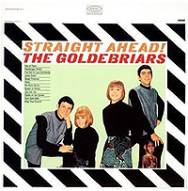
The Goldebriars'
Straight Ahead!
Click Cover For
More Info
By way of completing Curt's circle, in
addition to the groups and solo artists that I name-checked at
the outset, Boettcher went on to produce hit recordings for
The Association (And Then...Along Comes The
Association [1966] and the singles "Along Comes Mary" and
"Cherish") and Tommy Roe (It's Now Winter's Day
[1967] and the single "Sweet Pea"). Curt met
producer/songwriter Gary Usher during early 1966 and
again, later that year, while working on the Ballroom album.
The latter recording finally saw the light of day during 1998.
The Millennium album, released during July 1968, was
co-produced by Boettcher and Keith Olsen while this studio
only band consisted of Boettcher, Ron Edgar, Doug Rhodes,
Sandy Salisbury, Lee Mallory, Michael
Fennelly, and Joey Stec. Boettcher sang on the
Usher-produced [d. 1990] The Notorious Byrd Brothers
[1968] then worked with Gary at Together Records although the
label folded within a year of being founded. The first
Usher/Boettcher co-production was the Sagittarius album
Present Tense, which CBS issued during 1968, while
The Blue Marble appeared on Together the following
year. In 1971, at Jac Holzman's insistence, Curt signed as a
solo act with Elektra Records who eventually issued There's
An Innocent Face [1973]. Boettcher met Brian Wilson
during his first encounter with Usher and during the 1970s
Curt enjoyed recording associations with Dennis Wilson,
Mike Love, and Bruce Johnson. Later, Curt worked
on the Beach Boys recordings L.A. (Light Album)
[1979] and Keepin' The Summer Alive [1980]. We began
this two-part feature with mention of John Phillips,
who, the year after Curt passed, penned the Beach Boys' Grammy
nominated #1 U.S. Pop hit "Kokomo," which first appeared on
the soundtrack of the Tom Cruise movie Cocktail. Having
referenced the latter Phillips/Boettcher connection, I think
we've traveled full circle, musically.
In the past decade and a half via such
U.S.-based imprints as Sundazed, CBS (Special Products), and
Collectors' Choice; Dreamsville in Japan; Poptones and Rev-ola
in the U.K.; a significant number of Boettcher solo and group
recordings have been released, along with albums on which he
was producer, songwriter, or session musician. Curt Boettcher,
the vocal-arranging genius, is finally enjoying the exposure
he always deserved. Sony Music Direct in Japan issued the
Goldebriars and Straight Ahead! with, respectively,
two and four bonus tracks during the spring of this year and
followed in late September with Climbing Stars, a
twenty-one song collection that included unreleased songs and
alternate takes by the four- and six-piece version of the
group. All three Japanese releases featured liner notes by
Dotti Holmberg. Stateside, Collectors' Choice Music are to be
congratulated for adding the entire Goldebriars catalogue to
Boettcher's treasure trove of recordings because, at least for
this impatient fan, a significant part of a wonderful musical
jigsaw just fell into
place.
Notes:
#1: The song reached #7 on the U.K.
Pop chart in the summer of 1960 and reached #3 on the U.S. Pop
chart in the summer of 1963.
#2: After Neilson departed he left Jezebel
with the Goldebriars. She disappeared during one of the
group's 300 King St. residencies. As I said, the fans were
avid!
Arthur Wood is a founding editor of
FolkWax. You may contact Arthur at folkwax@visnat.com.
Real Sounds From the Work Place
The following are the Top Five most often
listened-to recordings in the FolkWax office this week,
November 9, 2006 (in no particular order):
1. Nickel Creek - Reasons
Why (The Very Best) (Sugar Hill) Release: November 14
2. Kristin Lomholt -
Spell (Whaling City Sound)
3. Norman Blake, Nancy Blake, Tut
Taylor - Shacktown Road (Dualtone)
4. Donal Clancy - Close To
Home (Compass)
5. Mike Marshall & Hamilton De
Holanda - New Words Novas Palavras (Adventure
Music)

This Week in FolkWax:
Bruce Cockburn
- In the E-zine:
FolkWax is Sittin' In With Bruce Cockburn. Bob Gersztyn
recently sat down with Bruce Cockburn to discuss his five
decades in the music business, writing songs, and his latest
CD, Life Short Call Now.
- On our News
Page: British Roots Magazine Relaunched; FolkWax
Artist and Album of the Year News; Roy Orbison Tribute
Concert Held; Tom Waits Television Appearances; New Festival
in Yorkshire; and many more Facts For Folks!
- On our Front
Porch feature page: The FolkWax Spotlight is on
the Goldebriars. Arthur Wood takes a closer look at this Folk
group on the heels of Collectors' Choice reissues of their
classic albums the Goldebriars and Straight
Ahead!.
- On the Pickin'
'n' Grinnin' page: Kerry Dexter reviews Newfound
Road's Life In Song and Shelley Morningsong's Out Of
The Ashes; Arthur Wood reviews Cosy Sheridan's Live At
CedarHouse; plus reviews of Chris Thile's How To Grow A
Woman From The Ground, Anna Massie's The Missing
Gift, and David Olney's Lenora.
- One
Year Ago Today In FolkWax: FolkWax was "Sittin'
In With Billy Joe Shaver." Adam Harris sat down with one of
the great American songwriters and discussed Shaver's
autobiography, personal losses, music, and his CD The Real
Deal.
- Don't forget to play the Folklore
Trivia Game: Remember, everyone who plays is in the
drawing for the prize! This week's prize: a Folk Ten-Pack! The
vault has been tapped once again and we are giving away a ton
of cool CDs. Play today for your chance at ten
CDs!


